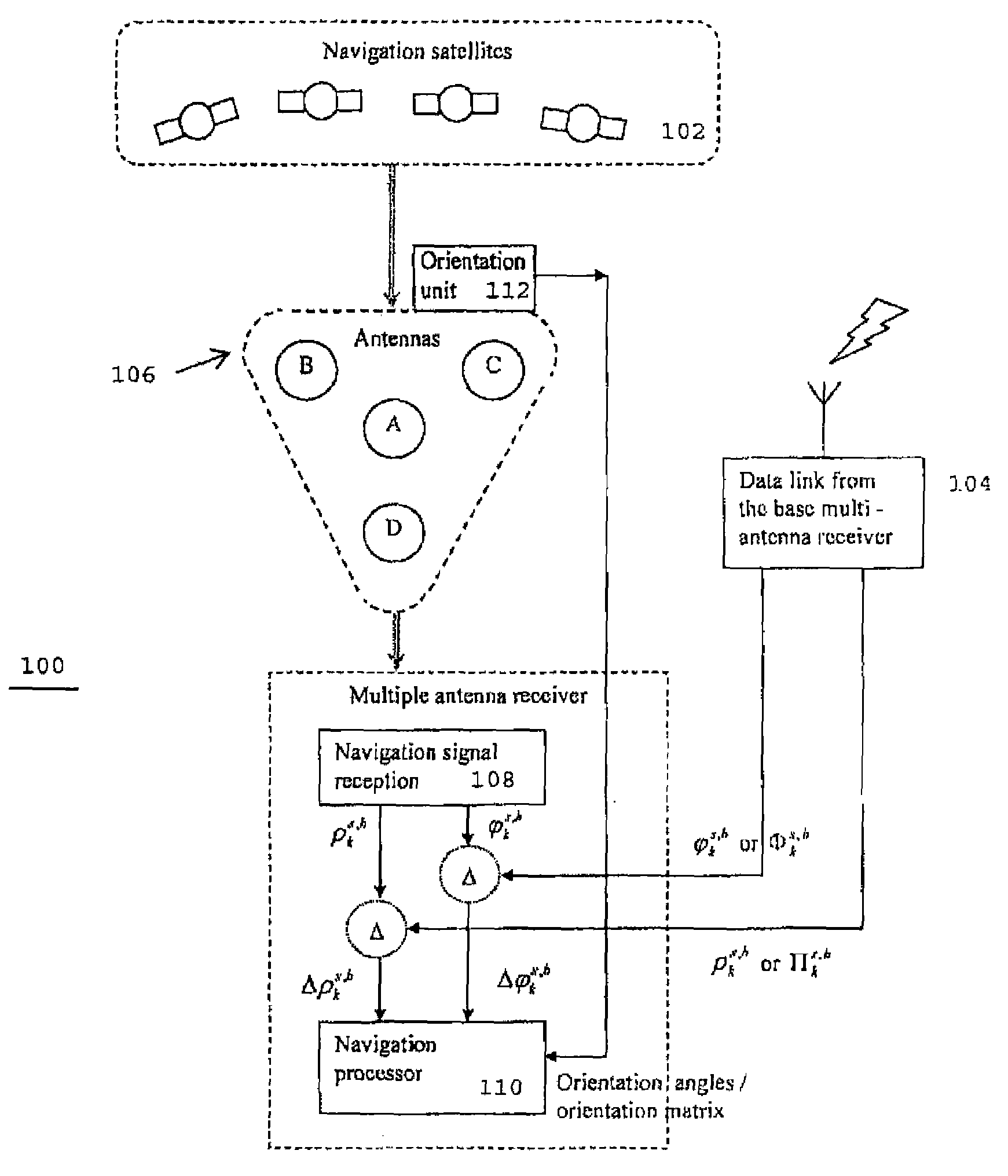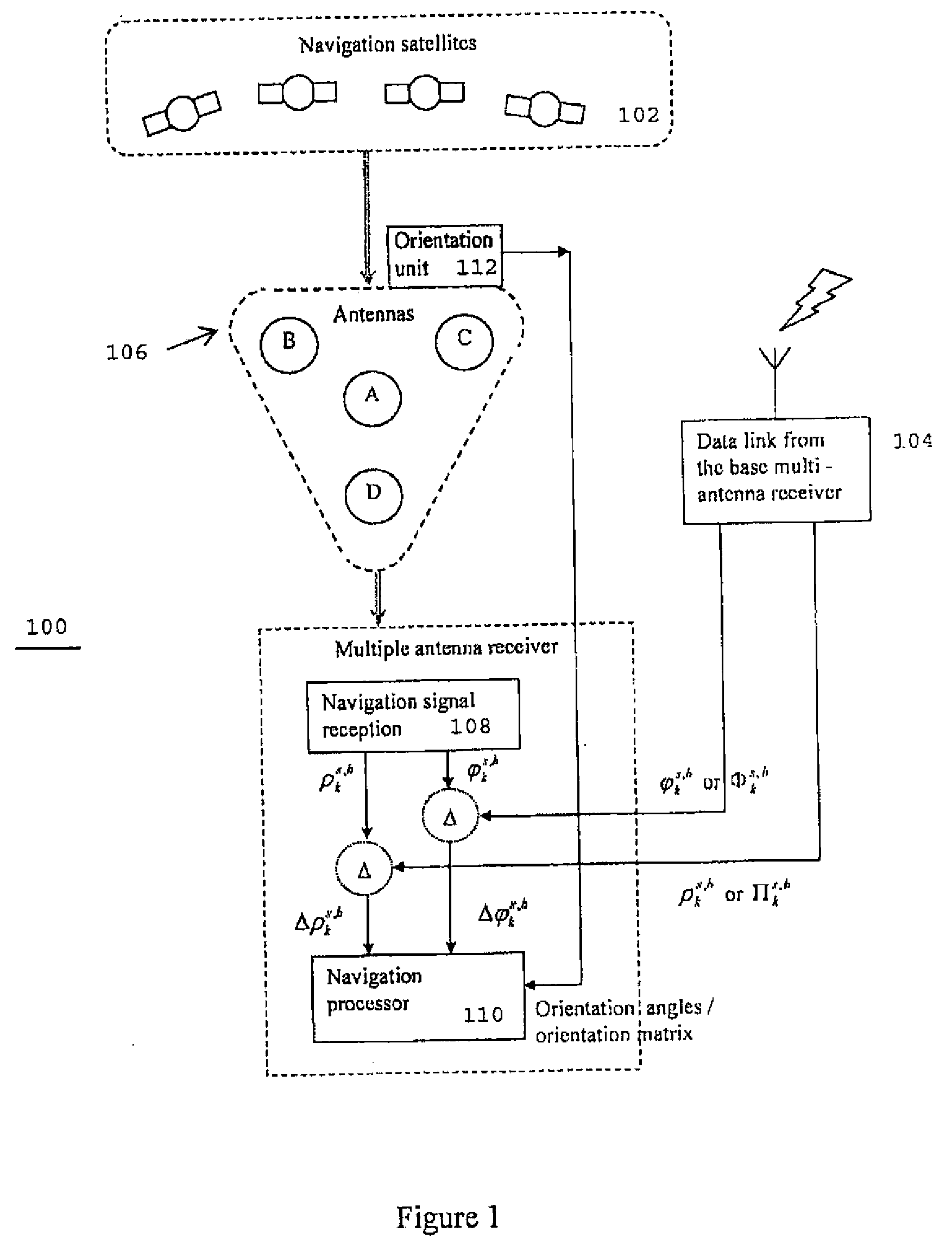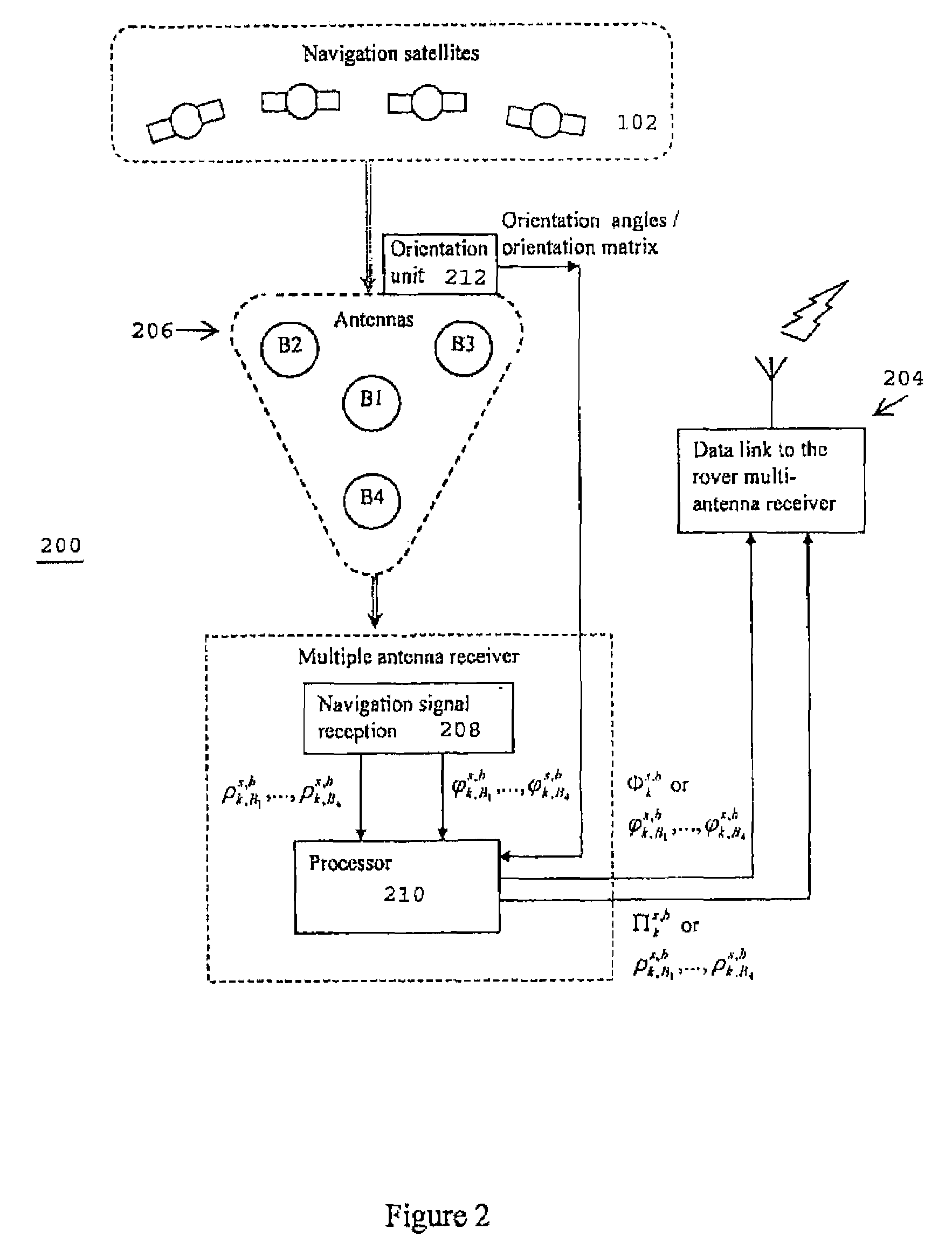Satellite differential positioning receiver using multiple base-rover antennas
a satellite differential positioning and receiver technology, applied in the field of satellite differential positioning system data processing, can solve problems such as multipath error, distortion of raw measurements, and type of errors, and achieve the effect of reducing the expected accuracy
- Summary
- Abstract
- Description
- Claims
- Application Information
AI Technical Summary
Benefits of technology
Problems solved by technology
Method used
Image
Examples
Embodiment Construction
[0030]In one embodiment, the present invention employs two multiple-antenna systems, one as base and the other as rover. Without loss of generality, this specification will primarily describe a base and a rover that each employ four-antenna assemblies.
[0031]FIG. 1 illustrates a rover receiver 100 according to embodiments of the invention in communication with navigation satellites 102 and a base transceiver (through a data link). As shown, the rover receiver 100 includes an antenna assembly 106 of four spatially symmetric antennas—master antenna A and auxiliary antennas B, C and D. A navigation signal receiver 108 receives satellite navigation signals through the antenna assembly to produce pseudorange and carrier phase measurements, which are provided to a navigation processor 110,
[0032]A rover-side data link 104 receives either raw pseudorange and carrier phase measurements or positional corrections from the base. The navigation processor 110 (i.e., rover processing logic) determi...
PUM
 Login to View More
Login to View More Abstract
Description
Claims
Application Information
 Login to View More
Login to View More - R&D
- Intellectual Property
- Life Sciences
- Materials
- Tech Scout
- Unparalleled Data Quality
- Higher Quality Content
- 60% Fewer Hallucinations
Browse by: Latest US Patents, China's latest patents, Technical Efficacy Thesaurus, Application Domain, Technology Topic, Popular Technical Reports.
© 2025 PatSnap. All rights reserved.Legal|Privacy policy|Modern Slavery Act Transparency Statement|Sitemap|About US| Contact US: help@patsnap.com



